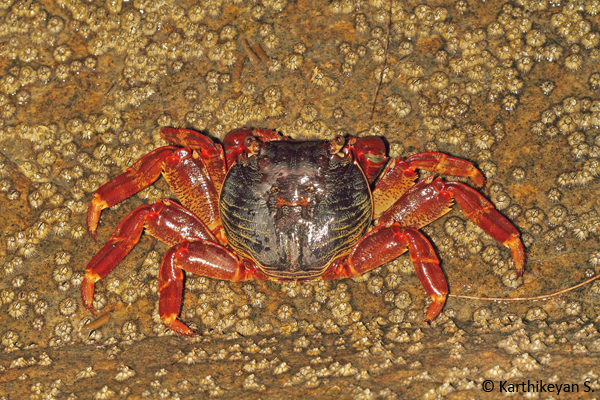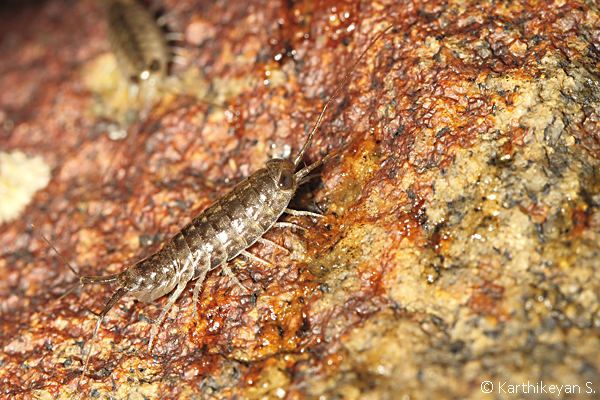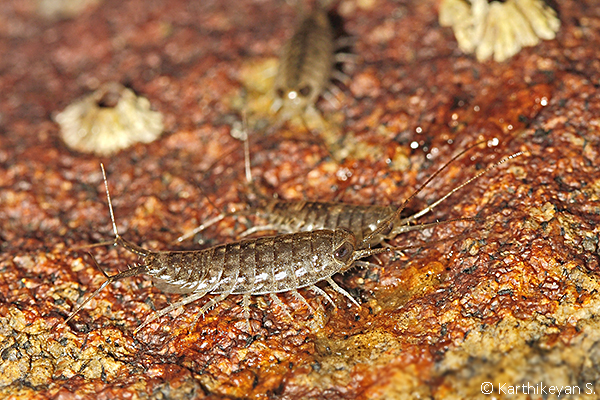A casual stroll on the beach at Devbagh along the west coast of Karnataka got me interested in crabs. A fascination that started with fiddler crabs eventually spread to the entire group. Consequently, this led me to document the fascinating array of crabs found there. This also meant that I spent a lot of time walking on the beach, amidst the mangrove and often getting down on all fours to photograph these crustaceans!
I had decided that my quarry for the afternoon session of ‘crabbing’ would be the Grapsus crabs that normally hang around the rocks along the water front close to the jetty. So with camera in hand, I set out for some ‘rock hopping’… at the same time trying to carefully approach these shy crabs.

Grapsus albolineatus (Family Grapsidae)
Now that I had managed to get satisfactory pictures of the Grapsus crabs, I turned my attention to some very small creatures that I had noticed while shooting the crabs. They were abundant and were seen moving about actively on the rocks. On approach they would quickly disappear into the crevices or under the rocks where it was dark.
First impressions – the form looked like a silver fish to me. Upon closer observation, I found that it resembles the woodlouse that I have encountered on several occasions under the bark of dead trees. These creatures had a pair of long antennae, a pair of tails that were branched and 7 pairs of legs that helped them move fast. A pair of particularly large eyes were very characteristic – a feature that was most noticeable when seen through a macro lens. The body of these creatures was some shade of grey, mottled with white and about a centimetre long.

They were busy walking about on the rocks, stopping now and then, perhaps to pick up a morsel of food that may have been washed upon the rocks by the waves. Having photographed them, I wanted to know more about them. Even as I first set eyes on them I knew they were not insects. I later learnt that they were more closely related to crabs – I had stumbled upon the Sea Slaters! Here, on the rocky beaches of Devbagh, sea slaters Ligia sp. are very common. At specific places, they are found in large numbers.

Not much is known about these little creatures, save that they are scavengers that feed on organic matter that gets washed onto the shore – thereby keeping the it clean! Should we take a leaf out of the sea slaters’ book and do our bit to keep the beaches – that we so love – clean?